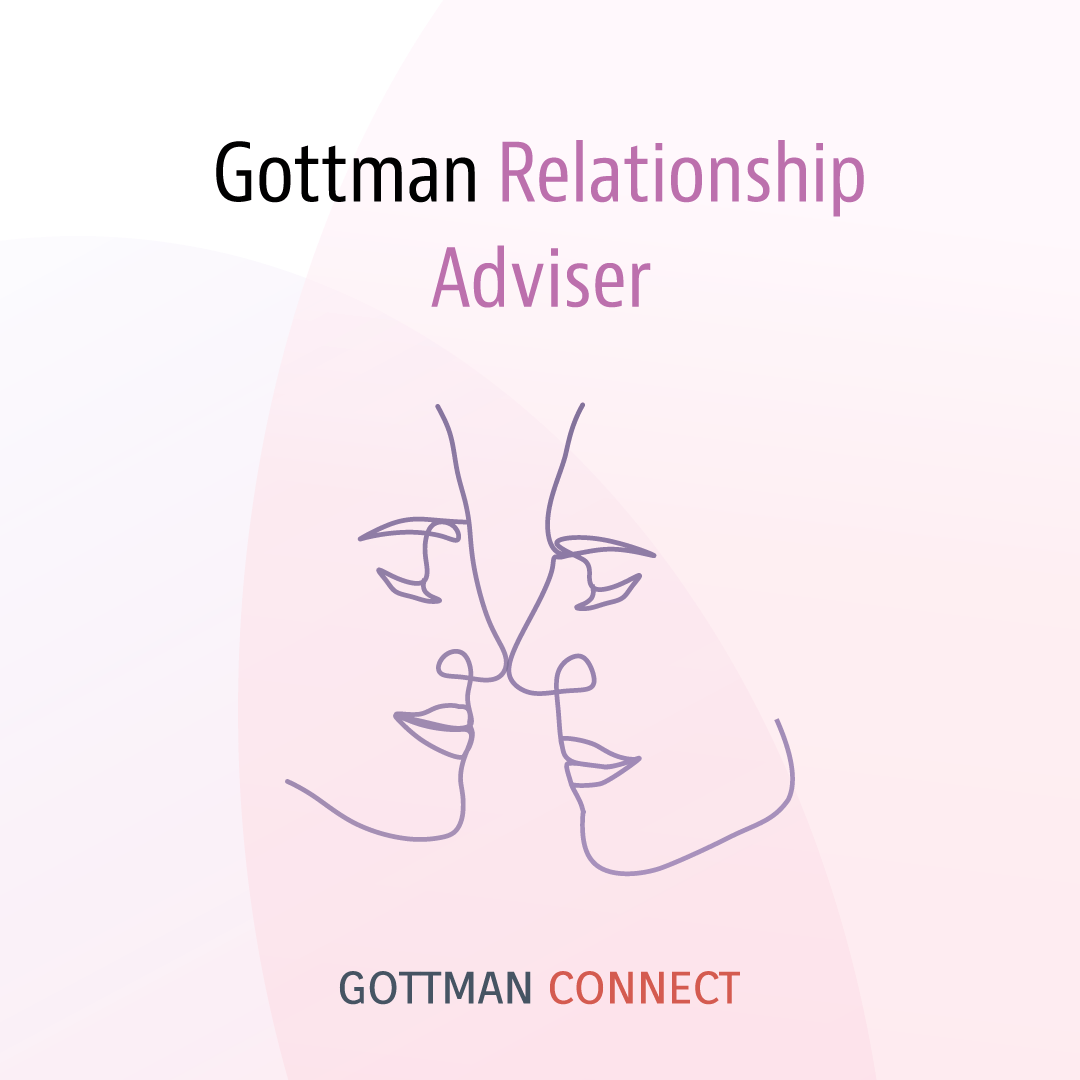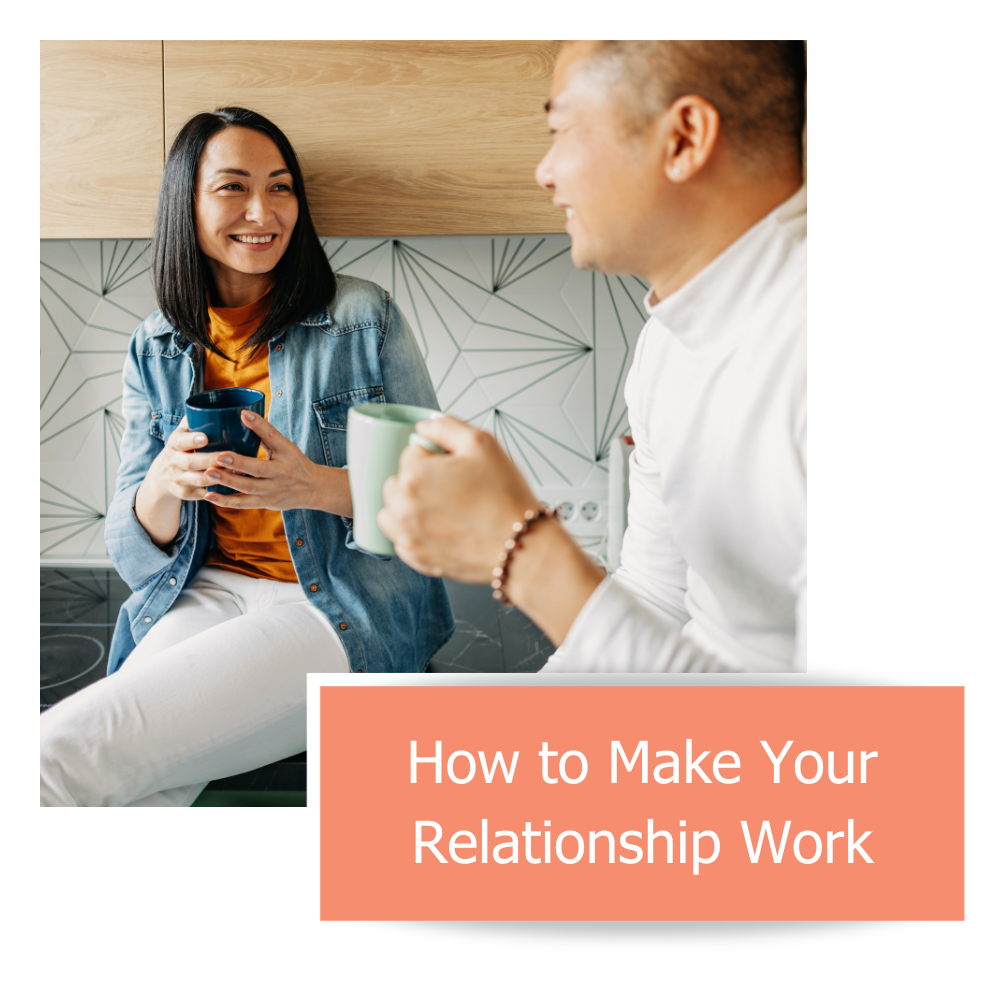Have you been attempting to control your partner without realizing it?
Have you ever justified taking on your partner’s emotional, relational, financial, or logistical responsibilities with:
- “I can do it better and/or more quickly, so I might as well just do it myself.”
- “They aren’t making it a priority, so I have to do the legwork for them.”
- “They won’t do it themselves, so I have to do it instead.”
- “If they don’t do it, they’ll have to face the consequences. I don’t want them to have to deal with that.”
- “I want to save the relationship but they don’t want to participate, so I’ll do the work for both of us.”
Controlling behavior is a hallmark of codependency, but the first time we come across the idea that we’re controlling, we sputter with indignation. Whether we’re “helping,” “generous,” “saving them from themselves,” or “doing it for our relationships,” many of us don’t realize that we use various tactics to influence our partners’ behaviors and manipulate the outcomes of situations.
How I Was Forced to Deal with My Codependence
As if from a great distance, I could hear my partner saying that he wasn’t happy in our relationship — and hadn’t been for a while, unbeknownst to me.
“Okay,” I said slowly, my heart racing. “Okay. Let’s talk about how we can work on it.”
My mind was already spinning with tactics and plans. He only stared back.
“I don’t want to work on it,” he responded, shrugging limply.
I had a choice. I could take his words at face value and accept his unwillingness. Or, I could try to fix our broken relationship single-handedly. My fear of loss was so strong that attempting to mend our broken bond felt like the only imaginable option.
And so I did.
Every night, I went to sleep with a highlighter and stack of self-help books beside my bed. I talked about my partner’s fears of intimacy in therapy and then dragged him to therapy along with me. I created a written chart of “argument rules” for us to follow when agitated.
I spent two long months effectively playing God, certain my methods would lead us straight into contented old age.
So when my partner finally broke up with me on the first day of my family’s annual summer vacation, I realized that my sense of control had been nothing but an illusion all along.
“You are afraid to surrender because you don’t want to lose control. But you never had control; all you had was anxiety.”
— Elizabeth Gilbert
This was three years ago. At the time, if you’d asked me what I thought was doing, the answer would have been simple: I’m trying to save our relationship. But the truth was, I was attempting to control my partner’s feelings and choices to get my desired outcome. I was working overtime in the hope that his feelings and behaviors toward me would change.
As my anecdote illustrates, many of us try to control others into meeting our own needs. This is especially true if we grapple with codependency or have an anxious attachment style. Marriage and family therapist and codependency expert Darlene Lancer explains:
“Instead of taking responsibility for their own happiness, which would be empowering, codependents’ focus is external. Rather than attend to their needs directly, they try to exercise power over others and control others to make themselves feel okay on the inside. They think, ‘I’ll change him (or her) to do what I want, and then I’ll be happy.’ This behavior is based on the erroneous belief that we can change others.”
Evaluating Your Controlling Behaviors
You might be subconsciously trying to control your partner if you do any of the following.
Doing for others what they can and should do for themselves
As independent adults, we are singularly responsible for our own physical, emotional, social, and financial well-being:
- Maintaining physical health.
- Sticking to routines.
- Staying in touch with friends and family.
- Taking financial responsibility for purchases.
If you find yourself regularly taking on responsibility for your partner’s relationships, wellness, finances, or otherwise, ask yourself: Why am I doing this? What’s my motive here?
Are you hoping your partner feels dependent on you so that they’ll never leave? Are you trying to protect your partner from facing the consequences of his or her behaviors? Are you trying to make up for what you believe to be your partner’s deficits?
Helping others avoid the negative consequences of their behaviors
When we try to mitigate the negative consequences of others’ irresponsible actions, we rob them of opportunities for growth and learning. Have you ever tried to mitigate the consequences when your partner acted out in addiction, in an angry outburst, or in some other irresponsible behavior? If so, you may think you’re being “helpful” or “kind,” but in reality, you are enabling your partner’s irresponsibility. Without experiencing negative consequences, folks who engage in destructive patterns are far less likely to change.
We also help our partners avoid negative consequences when we refuse to express justified anger, sadness, or discomfort with their actions. When we avoid sharing our feelings for fear of hurting their feelings, we’re really just managing their feelings — and that’s not our work to do.
One of my favorite counselors, Jordan Pickell, puts it this way: “When setting a boundary, you don’t need to smooth over the tension. You don’t need to protect people from feeling uncomfortable. It makes sense for people to feel bad and weird when they have crossed a line.”
Making empty threats disguised as boundaries
Boundaries are statements of what we will or will not tolerate. The goal of a boundary isn’t to change another’s behavior, but to create safety and integrity for ourselves. In order for a boundary to be genuine, you must be ready to enforce the boundary when it is not respected. Otherwise, it’s just an empty threat: an attempt to get someone else to act your way on your terms.
For example, you say to your partner, “If you don’t start treating me more kindly, I’m going to leave you.” If your partner continues to treat you poorly, you need to be ready to leave that relationship — because, if you don’t, your “boundary” was just a tactic to change your partner under false pretenses.
Attempting to “heal” or change others when they have no desire to change themselves
Change is an inside job. We can support or hinder others’ healing journeys, but we cannot take the journey for them. In order to heal, one must be willing to heal.
If someone is not willing to quit an addiction, we cannot educate them into quitting. If someone is not ready to address their trauma, we cannot force them to heal. If someone carries heavy baggage from their past, we cannot pry that baggage from their hands.
We can support their journey and assist along the way if they have the willingness to grow. But we cannot plant a seed of willingness for someone else.
My partner clearly stated his unwillingness to work on fixing the relationship, but that didn’t stop me from buying self-help books, taking him to therapy, and using every tool in my toolbox to make him change on my terms.
Engaging in protest behavior
When our partner is unable or unwilling to give us the depth of connection we seek, we may resort to protest behavior. Protest behaviors are attempts to get reactions from our partner — reactions which, if only momentarily, will create a feeling of connection. Protest behaviors include things like intentionally withholding communication, withholding sex, attempting to make a partner jealous, or threatening to end the relationship.
Protest behaviors are not driven by a genuine desire: we don’t genuinely desire not to be in touch, we don’t genuinely desire to end the relationship, we don’t genuinely want to engage with another person outside of the relationship. What we want is our partner to change how they interact with us, and we believe that these behaviors will facilitate that change.
The book Attached: The New Science of Adult Attachment is a good resource for reading more on protest behaviors and other issues of attachment that factor into controlling behaviors.
Making others singularly responsible for your emotional state
When my ex and I fought, I became inconsolable. At the conclusion of every argument, I felt certain he would leave me. He needed time and space to re-center, but my anxiety was so strong that I refused to give him that space. With guttural sobs and fearful pleas, I demanded his reassurance, which he begrudgingly gave.
In hindsight, it’s clear to see how I used my emotional outbursts to secure attention from my partner when he was unwilling to voluntarily give it. Instead of understanding that we were both responsible for meeting our own needs in that moment — him taking space, me self-soothing — I created conditions in which he felt pressured to abandon his own needs to prioritize mine.
The Solution Lies Within You
If you’ve used the above tactics consciously or unconsciously, you’re not alone. Many of us have had to release our toxic illusions of control. As we move forward, we must learn what actually lies in our sphere of control — and learn to live strictly within that sphere.
To release my illusion of control and take responsibility for my own happiness, practicing the following habits in my relationships gave me the most relief:
#1. Make a list of the things that are in your control and a list of the things that are not.
In your “I Can Control” list, be sure to include your actions, your reactions, the words you say, the boundaries you set, and the amount of time you spend. In your “I Cannot Control” list, be sure to include others’ actions and reactions, others’ feelings, others’ relationships, and so on.
I found it particularly helpful to include these on my list:
- I can control whether or not I express my needs and how I express them. I cannot control whether or not others meet my needs.
- I can control whether or not I set and enforce boundaries around intolerable behavior. I cannot control others’ intolerable behavior.
- I can control the extent to which I choose to heal from my past. I cannot control others’ willingness or ability to heal and grow.
At first, releasing the illusion of control feels terrifying. After all, control has been our way of managing the world around us and creating a sense of safety for ourselves. When I first reviewed my list, I wondered, What will happen if I’m not controlling this? Will everything collapse around me?
Behind that fear, though, was a freedom I hadn’t predicted. I looked at the column of items I could not control and realized how much time I spent, each and every day, attempting to manage, manipulate, and influence others. I put incredible effort into making others happy when they were sad. I used endless lines of reasoning to alleviate others’ guilt for things they’d said and done. I got blue in the face spouting instructions for how to properly pay a bill, how to stop getting drunk, and how to mend broken relationships with family members. I was utterly convinced that if I just said my piece in a perfectly convincing manner, I could get others to act my way.
When I let go of these fruitless attempts at control, I reclaimed hours of my time. With this newfound time, I was able to…
#2. Refocus on your own needs, desires, and passions.
When in doubt, return home to yourself. By taking responsibility for meeting your own needs and pursuing your own passions, you will find yourself much less likely to attempt to control others.
Not sure where to begin? For every item on your “I Cannot Control” list, come up with an alternative way to spend that energy that centers your own desires and passions. Here are some of the ways my priorities shifted over time, from things that I should not be attempting to control to things that I could:
- Helping my partner advance his career → advancing my career
- Trying to get my partner to go to therapy for his baggage → going to therapy for codependency
- Helping my partner mend his relationship with family members → mending my own relationships with family members
- Begging my partner to soothe and reassure me → learning cognitive and somatic techniques for soothing myself
As a result of these changes, my career advanced, my resilience grew, my relationships with family members improved, and I accumulated an arsenal of coping mechanisms that I use to this day. It was incredible how much time, space, and energy became available to me when I was no longer spending it trying to change someone else.
#3. Ask before offering help — and accept the answer the first time.
Help can be useful if it is freely given with no strings attached. If you have a tendency toward over-control, though, you may have a history of offering help in order to engender someone’s favor, to get someone to act a certain way, or to manipulate a situation to achieve your desired outcome.
Begin asking before offering help. Keep it simple: “Would you like help with that?” If they don’t want your help, don’t give it. If your offer is rejected, avoid the compulsion to ask, “Are you sure?” Once the question has been asked and answered, it’s time to move on.
It was very hard for me to stop offering my loved ones “help” in the emotional sphere. It might not surprise you to learn that I read a lot of books about psychology and relationships. Historically, when loved ones embodied a behavior that I’d come across in a recent reading, I jumped at the opportunity to psychoanalyze them, dissect their family history, and offer suggestions for healing.
Now, instead of playing therapist without their consent, I say, “What you’re describing sounds like something I’ve been reading about lately. Do you want to hear the connection?” or “I found an article that describes the type of family you grew up in. Do you want me to send it to you?”
To my surprise (the psychology geek that I am), more often than not, the response is either a halfhearted “maybe” or a simple “no.” As it turns out, few folks enjoy being therapized outside the safe confines of a legitimate therapist’s office.
At first, their refusal baffled and insulted me. They have no idea how much this information could help them! I’d fume silently. They must not care about their healing or personal growth. They must not trust that I know what I’m talking about.
This way of thinking imposed my personal value system upon others. I expected them to react the way I would react, and when they didn’t, out poureth my judgments!
Over time, I realized that what to me felt like a fascinating intellectual exercise might have felt overwhelming, painfully vulnerable, or intrusive to my loved ones. Ultimately, accepting others’ refusal of my help meant trusting their own decision-making process and honoring their own autonomy — something that it is notoriously challenging for recovering codependent folks to do.
#4. When in distress, focus on how you can self-soothe.
As my earlier story demonstrated, I tried to control my partner because I made him responsible for my happiness and for soothing my distress. A critical step in breaking the over-control pattern was learning to self-soothe and take responsibility for my own emotional state.
Now when I feel distressed, instead of immediately reaching out to my partner for help, I practice the following self-soothing techniques:
- When I feel myself teetering on the edge of a powerful emotional reaction, I give myself permission to sit quietly with the feeling. I put my hand directly on my heart, notice where the feeling lives in my body, and wait for my pulse to slow down. “Leaning in” to the physical sensation that accompanies emotional pain is a core tenet of Dr. Peter Levine’s somatic experiencing model, which has been an incredible resource to me in my self-soothing practice.
- If I’m in the presence of others when a strong emotion comes forth, I take a few minutes or more to be entirely alone. If I need more space — say, a night to myself — I take it.
- Should I need support from someone else, I have a shortlist of trusted friends and family I can call. I know that there are many folks available who can tug me out of a dark emotional place. My partner is not the only one capable of helping me.
These techniques not only decreased my dependence on my partner, but also instilled in me a profound sense of resilience. Instead of feeling like a victim in the face of an emotional typhoon, I knew I had the internal resources I needed to ride out the storm.
#5. When someone tells you that they’re unwilling to work on an issue, believe them.
As Maya Angelou famously said: “When someone shows you who they are, believe them the first time.” Had I accepted my ex-partner’s statement that he was unwilling to work on our relationship, I would have saved myself two long months of fruitlessly attempting to change his mind — and two long months of heartache.
I eventually learned that in order for a pair to solve a relationship issue, both parties must be willing to do their part. This requires that both parties acknowledge the role they play in the dysfunction and take concrete steps to change their habits.
Unless a person is adamant that they are willing to change, assume that how they are now is how they will be. That being the case, consider: If this person does not change, is this a relationship I will be happy in?
Remember: You cannot heal another person’s woundedness. You cannot carry another person’s baggage. Your efforts cannot transform an emotionally unavailable person into an emotionally available one.
I have found it helpful to construct a list of non-negotiables that serve as a rubric when I’m debating whether a relationship is healthy enough for me to maintain. My non-negotiables are qualities and behaviors that absolutely must, or absolutely must not, be present in my partner.
Mine include the obvious — no physical violence, no emotional abuse, and no sexual coercion — as well as willingness to work through tough moments, a sense of humor, and regular expressions of love and affection.
#6. Learn to say no. Practice diligently.
Despite our hope that our partners will anticipate our needs intuitively, this is often not the case. Even the fiercest love can’t transform our partners into mind-readers. It is our responsibility to communicate our boundaries and give others the opportunity to respond accordingly. If we don’t, we may fall into old habits of attempting to control others into meeting our needs.
Boundaries are a form of verbal self-defense. They are protective mechanisms that maintain the integrity of our inner worlds while also blocking out people, places, and things that we find unacceptable. We can set boundaries around our physical bodies, our time, our possessions, our communication with others, and more.
Not sure where you might need to set a boundary? Consider when and where you feel resentful. Literally defined as “bitter indignation at having been treated unfairly,” resentment arises when others trespass our spoken or unspoken boundaries.
Once you’ve identified your resentment, you can set a boundary with the person in question. For those of us who are new to communicating our needs directly, finding the right language is often the hardest part. As I describe in my article “How to Set a Challenging Boundary from Start to Finish,” my favorite framework for boundary-setting is the “I-statement” approach developed by clinical psychologist Thomas Gordon in 1970. I appreciate this model because it centers the boundary-setter’s feelings and experiences, reduces the likelihood of defensiveness in the listener, and offers concrete suggestions for change.
The approach includes four simple parts:
- I feel _________________________________________.
- When you _____________________________________.
- Because _______________________________________.
- I need ________________________________________.
Boundaries that follow this model might sound like:
- “Shelley, I feel taken advantage of when you ask me to babysit your kids more than twice a month because it makes it harder for me to prioritize other things I care about. I need you to find additional babysitters because I can’t shoulder this responsibility on my own.”
- “Steven, I feel overwhelmed when you text me because I don’t have the time or space for this connection right now. I need some space.”
- “Dad, I feel uncomfortable when you ask me to accompany you to church because it doesn’t align with my spiritual beliefs. Please don’t ask me again so I can make my own decisions without pressure or guilt.”
- “I feel upset when you borrow my tools without asking because I garden on a regular basis. I need you to ask before borrowing my tools in the future.”
You can adapt this language to suit your own conversational style or tone.
At first, the tactics I’ve suggested in this article may feel like heavy burdens. I know they did for me. When I first began recovery from codependency, I was so accustomed to getting my sense of power from controlling others that the idea of taking responsibility for myself felt overwhelming.
In her book The Language of Letting Go, Melody Beattie offers four powerful questions that gave me the inspiration and motivation I needed to get started. I will leave you with them.
She writes:
“If we weren’t trying to control whether a person liked us or her reaction to us, what would we do differently?
If we weren’t trying to control the course of a relationship, what would we do differently?
If we weren’t trying to control another person’s behavior, how would we think, feel, speak, and behave differently than we do now?
What haven’t we been letting ourselves do while hoping that self-denial would influence a particular situation or person?
Make a list, then do it.
Want to master the art of setting boundaries and start saying YES to YOU? Join my group coaching program, The Say No Club: a 25-person, 6-week program that combines education with real life practice and community support. Register here today.
This article originally appeared on the author’s website.










